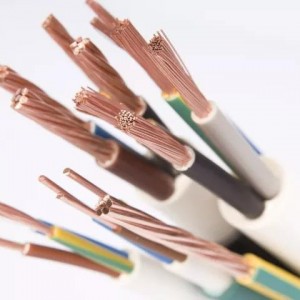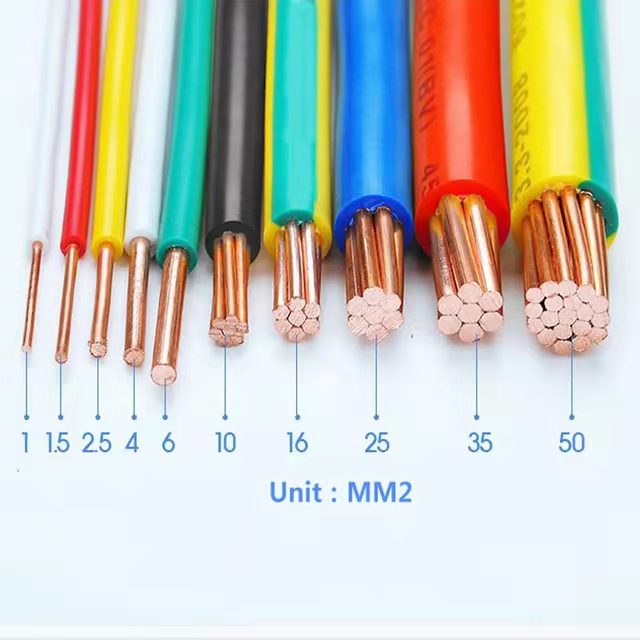The insulation thickness of the produced power cable is unqualified. What is the impact of the unqualified thickness of the insulation layer on the cable? What kind of sheath is qualified? How do we make qualified cables in production?

The hazards of unqualified sheath thickness
Reduce the service life of wire and cable products
This is easy to understand. After long-term operation, especially direct burial, immersion in water, exposure to the open air or corrosive environment, due to long-term corrosion by external media, the insulation level and mechanical level of the thinnest point of the sheath will decrease.
In addition, routine sheath test detection or line grounding fault occurs, the thinnest point may be broken down. In this way, the protective effect of the cable sheath will be lost. In addition, the internal consumption cannot be ignored. The long-term power supply of wires and cables will generate a lot of heat.
Here is a little common sense: the allowable operating temperature of the conductor is 70℃, and the long-term use temperature of polyvinyl chloride should not exceed 65℃. So wires and cables are actually in a situation of “internal and external troubles”.
Increased difficulty in the laying process
With the development of global industry, more and more environments require high-voltage cable products to have a small outer diameter. In the process of laying, it is necessary to consider leaving gaps so that the heat generated by the wires and cables after power is turned on can be dissipated. The thickness of the sheath is too thick, which will increase the difficulty of laying. Therefore, the thickness of the sheath must strictly comply with the relevant standards, otherwise it will not be able to protect the wires and cables. You can’t just pursue its thickness.

What kind of sheath is qualified?
Based on the above two analyses, it is not difficult to see that the quality of the product is good or bad, and its first feature is reflected in the appearance quality of the product. No matter what kind of product or semi-finished product, the appearance quality must be emphasized in production, and it must be strictly controlled and inspected.
The sheath is the appearance of the cable. Its appearance requirements are smooth and round, uniform gloss, no core deviation (not exceeding the specified deviation), no mechanical damage, flattening, no visible debris, bubbles, sand holes, obvious particles, bamboo joints, twists, etc. In addition to meeting the above quality requirements, the thickness of the sheath also has a certain impact on the quality of the cable.
It is well known that the function of the cable sheath is to protect the insulated core of the cable from damage under the action of external force. If the thinnest point of the cable sheath does not meet the requirements, the cable sheath will be damaged before the normal maximum external destructive force is reached.
If the sheath thickness of the cable is lower than the standard requirement during production, it is unqualified, and the thickness exceeds the standard requirement. For example: the cable model is DLD-KYJV22 3*1.5mm2, and the average sheath thickness is measured to be 1.7mm. If this model refers to the GB9330-88 standard requirements, the thickness should be 1.2mm.
Points to note in sheath production
Control the sheath thickness according to the standard calculation formula: D (outer diameter before extrusion) × 0.035 + 1;
Online measurement of sheath thickness: sheath thickness = (circumference after extrusion – circumference before extrusion) / 2π or sheath thickness = (circumference after extrusion – circumference before extrusion) × 0.1592;
Thinnest point of single-core sheath: nominal value × 85% – 0.1;
Thinnest point of multi-core sheath: nominal value × 80% – 0.2;
Increase the temperature of the low-density polyethylene sheath extruder to improve the stress cracking strength, because the extrusion temperature is too high, which can easily cause the plastic to burn or “slip”; in addition, the shape stability of the extruded layer is poor, the shrinkage rate increases, and even the extruded plastic layer will change color and bubbles will appear;
Do a good job of the extruder body and screw cooling system to eliminate friction overheating, so as to maintain the thermal balance during the extrusion process, stabilize the extrusion pressure, promote uniform mixing of the plastic, and improve the plasticization quality.
To sum up, in the production process, we only need to carefully operate the equipment and strictly control the sheath thickness according to standard requirements. This can not only save resources for the enterprise, reduce material consumption, increase profits, but also ensure the quality of the cable and create high-quality and low-cost products.
Post time: 2025-05-13




